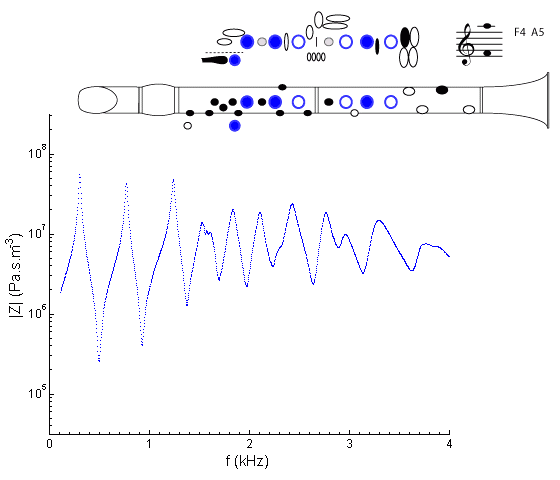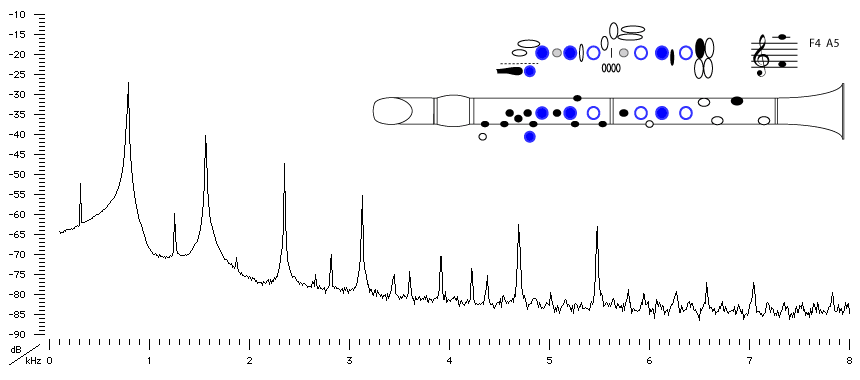| Acoustics of the saxophone |
Bb saxophone |
multiphonic
|
|

|
Fingering Acoustic schematic Non-specialist introduction
to acoustic impedance Notes are the written pitch. |
Here, the F4 may be considered as produced by a tube open at the speaker key, but with very considerable 'cross fingering' that, using such a long, small diameter hole as a tone hole, is much flatter than one might expect. Better, however, is to consider the first impedance peak here as a modified version of the first peak for the fingering for D4, which here is reduced in magnitude and raised in frequency by the speaker key acting as a register hole. The A5 is produced by the second peak in the impedance spectrum, which one could consider as the second resonance of a modified fingering for D4, with the speaker key acting as a register hole, and with a little cross fingering from the middle finger of the right hand.
A two-note multiphonic requires the superposition of two standing waves (whose frequencies, which are not in harmonic ratios, determine the pitches). Usually, this is achieved by opening one (usually small) tone hole in a series of closed tone holes. The wave travelling downstream from the reed is partially reflected at the open tone hole, which makes one standing wave. The rest of the energy in the incident wave continues down the bore, until it reaches the first in a series of open tone holes. Here it is reflected to make the second standing wave.
For this situation to apply, the frequencies of the notes have to be such that the effect of the inertia of the air in the open tone hole is large enough to allow some transmission past the hole, but small enough to produce some reflection. For low-pitched notes, the tone hole is usually small.

Sound spectrum
of a Bb saxophone
played using fingering for the multiphonic F4 with A5.
For more explanation, see
Introduction to saxophone acoustics
![]()
![]() You can hear the multiphonic F4 with A5
played.
You can hear the multiphonic F4 with A5
played.
|
Contact:
Joe Wolfe
/ J.Wolfe@unsw.edu.au |